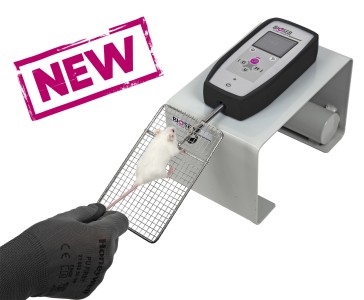Authors
K Ma, H Wu, P Li, B Li
Lab
Department of Hygienic Toxicology, Public Health College, Harbin Medical University, Harbin, China
Journal
Acta Biochimica et Biophysica Sinica
Abstract
Atrazine (2-chloro-4-ethylamino-6-isopropylamine-1,3,5-triazine; ATR) has been demonstrated to regulate autophagy- and apoptosis-related proteins in doparminergic neuronal damage. In our study, we investigated the role of LC3-II in ATR-induced degeneration of dopaminergic neurons. In vivo dopaminergic neuron degeneration model was set up with ATR treatment and confirmed by the behavioral responses and pathological analysis. Dopaminergic neuron cells were transfected with LC3-II siRNA and treated with ATR to observe cell survival and reactive oxygen species release. The process of mitochondrial autophagy and the neurotoxic effects of mitochondrial autophagy were detected by immunofluorescence assay, immunohistochemical analysis, real-time PCR, and western blot analysis. Results showed that after ATR treatment, the grip strength of Wistar rats was significantly decreased, and behavioral signs of anxiety were clearly observed. The mRNA and protein levels of tyrosine hydroxylase, LC3-II, PINK1, and Parkin were significantly decreased in ATR-induced rat dopaminergic neurons and PC-12 cells, while the mRNA expression and protein levels of SQSTM1/p62 and Parl were increased. Exposure to ATR also led to accumulation of autophagic lysosomes and autophagic bodies along with significantly decreased levels of dopaminergic neurons and alterations in mitochondrial homeostasis, which was reversed by LC3-II siRNA. Our results suggest that ATR affects the mitochondria-mediated dopaminergic neuronal death, which may be mediated by LC3-II and other autophagy markers in vivo and in vitro through SQSTM1/p62 signaling pathway.
BIOSEB Instruments Used
Grip strength test (BIO-GS3)
Source :
https://academic.oup.com/abbs/article-abstract/50/10/1047/5064273?redirectedFrom=fulltext

 Pain - Thermal Allodynia / Hyperalgesia
Pain - Thermal Allodynia / Hyperalgesia Pain - Spontaneous Pain - Postural Deficit
Pain - Spontaneous Pain - Postural Deficit Pain - Mechanical Allodynia / Hyperalgesia
Pain - Mechanical Allodynia / Hyperalgesia Learning/Memory - Attention - Addiction
Learning/Memory - Attention - Addiction Physiology & Respiratory Research
Physiology & Respiratory Research











![Dynamic Weight Bearing 2.0 – Postural Module [Add-on]](https://bioseb.com/733-home_default/dynamic-weight-bearing-20-add-on-postural-module.jpg)
























 Pain
Pain Central Nervous System (CNS)
Central Nervous System (CNS) Neurodegeneration
Neurodegeneration Sensory system
Sensory system Motor control
Motor control Mood Disorders
Mood Disorders Other disorders
Other disorders Muscular system
Muscular system Joints
Joints Metabolism
Metabolism Cross-disciplinary subjects
Cross-disciplinary subjects CONFERENCES & MEETINGS
CONFERENCES & MEETINGS 